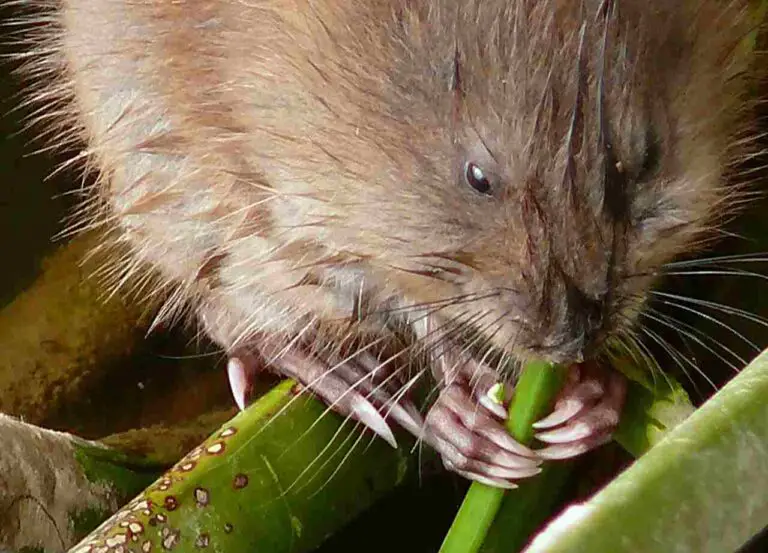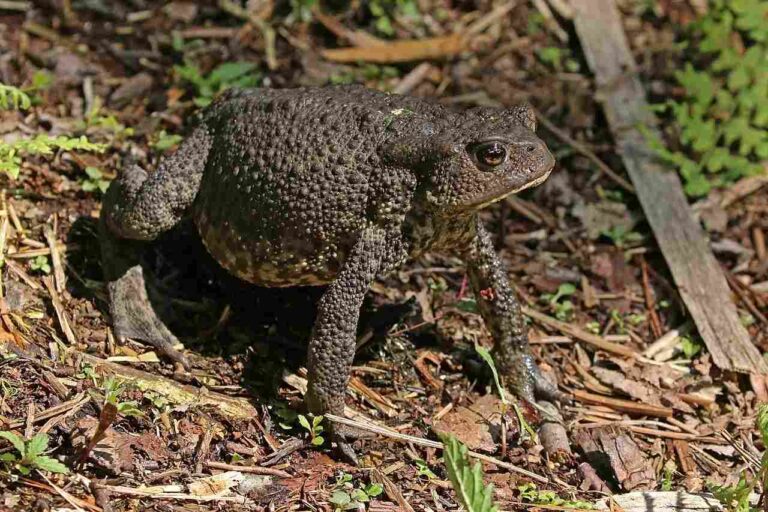Cover Crop Definition and Examples Explained
A cover crop is any resilient and dominant plant that is grown specifically to serve as a protective covering for the soil. This article discusses cover crop definition and examples, as outlined below;
-Cover Crop Definition: 5 Ways to Define Cover Crops
-3 Main Examples of Cover Crops
Cover Crop Definition: 5 Ways to Define Cover Crops
A cover crop is a biological tool for sustainable farming, which occurs in the form of plants that can be planted on land to protect and enhance the soil.
As implied above, the main purpose of cover crop cultivation, or ‘cover cropping‘, is soil conservation [5]. The alternative cover crop definition below, mentions some other functions of these plants;
Cover crop is any plant which provides a layer of organic biomass for soil covering to mitigate erosion, while performing other functions such as water conservation and fertility enhancement [2].

Aside erosion, cover crops have been found to be effective in controlling other manmade and natural hazards such as flooding [1]. In some cases, these crops can serve as tools of bioremediation to reverse unfavorable environmental impacts like pollution.
Some examples of cover crops are mentioned in the cover crop definition below;
A cover crop is any of various plants, such as; vetch, alfalfa, cowpea, buckwheat, sorghum and rye; which can be deliberately cultivated in a bid to protect, conserve and improve the soil or landscape.
The two most common categories of cover crops are legumes and cereals.
For a crop to function effectively in soil conservation, it must possess a number of characteristics. In the cover crop definition below, some characteristics of cover crops are highlighted;
Cover crop is a non-cash crop whose characteristics like rapid growth, large mass, low growth-height, and competitive behavior, enable it to be used as a tool for erosion control, and soil fertility optimization [3].
From the above it could be deduced that the characteristics of cover crops are rapid growth, resilience, competitive and dominant behavioral patterns, large mass, and low growth-height.
The term ‘non-cash crop’ which is used in the above definition does not suggest that no cover crop can be grown as a cash crop; but rather that their purpose can be diverted solely for soil protection, rather than direct economic profit.
Below is yet another cover crop definition that portrays these crops on the basis of some context(s) in which they are relevant or can be used;
A cover crop is a rapid-growing plant species which may be cultivated as part of a crop rotation scheme, in combination with conservation tillage, or in the context of organic farming, biodynamic farming or permaculture, and whose functions include erosion control, soil moisture conservation, and fertility improvement.
3 Main Examples of Cover Crops
Examples of cover crops are legumes like; vetch, red clover, cowpea; cereals like; sorghum, Sudan grass, rye; and vegetables like; radish, turnip, and brassica.
Each of these three categories is discussed briefly below;
1). Legumes as Examples of Cover Crops
Legumes are the most common category of cover crops.
Their popularity arises mainly from the role which these plants play, in improving soil fertility.
Legume crops facilitate nitrogen fixation in soil, by storing significant amounts of nitrogen derived from microbial and phytological activities, in their root nodules [6].
The effectiveness of soil as a carbon sink is also enhanced when legumes are used as cover crops. These legumes increase soil organic carbon through biodegradation and carbon sequestration.
Legumes are also very resilient. Their effectiveness in erosion control can be traced to similarities between the ecologic behavior of legumes and that of grasses; whereby legumes tend to be low-lying, rapid-growing, and generally competitive.
The large mass of legume crop assemblages makes them ideal to serve as organic mulch, which reduces evaporation and increases moisture retention of the soil.
Lastly, legumes are a good choice where livestock are available, or in pastoral lands. Their relevance as forage implies that they would serve effectively in integrated crop-livestock settings.
Vetch, cowpea, and clover, are all examples of cover crops which are legumes.
2). Cereals as Examples of Cover Crops
Cereals, or grasses, are also very popular as cover crops.
Their most notable characteristic which makes them suitable for this role is their growth pattern.
Cereals generally tend to grow rapidly, can be resilient, massive in areal coverage, and very competitive.
They are easier to plant than legumes, and are a good choice where labor and time resources are limited.
Multiple species of cereals can be planted in a cover cropping project, to establish a healthy level of biodiversity that can temporarily transform the farm into a self-sufficient ecosystem.
The root system of cereals are usually well-developed, and are effective for binding soil aggregates together and mitigating erosion. They also improve infiltration and moisture retention, both of which help to reduce the risk of flooding.
Cereals are capable of retaining and conserving soil nutrients by ‘binding’ these nutrients and preventing their loss through leaching or any other process. They are also very versatile, and can be planted in a bid to avoid some disadvantages of cover cropping like climate selectivity.
However, cereals are not as effective as legumes or vegetables for moisture conservation. Their use as cover crops is not always recommendable in areas prone to hot climatic conditions, dryness, and events like heat waves and desertification.
Like legumes, cereals may simultaneously serve as forage for livestock, and as organic mulch.
Rye, buckwheat, sorghum and Sudan grass are examples of cover crops which are cereals.

3). Vegetables as Examples of Cover Crops
Vegetables are also useful as cover crops.
Their favorable characteristics include rapid growth, low growth-height, and high spatial density.
Vegetable cover crops can serve simultaneously as organic mulch. They may also undergo biodegradation and be converted to compost or organic fertilizer.
However, vegetables are not as resilient as cereals or legumes, for erosion control. They may also exhibit climate selectivity and may perform below average under certain environmental conditions.
Radish, turnip and brassica are all examples of cover crops which are vegetables.
Conclusion
A cover crop is any plant with rapid-growth characteristics, that can be cultivated to control erosion and boost soil fertility.
Examples of cover crops are; red clover, cowpea, vetch, sorghum, rye, Sudan grass, turnip, brassica and radish. They can be broadly grouped into legumes, cereals and vegetables.
References
1). Ibrahim, M.; Ndatsu, J. A.; Yisa, K. M.(2020). “Effects of Flood on Crop Farmers in Riverine area in Niger State Nigeria.” ATBU Journal of Science, Technology and Education. Available at: https://www.semanticscholar.org/paper/Effects-of-Flood-on-Crop-Farmers-in-Riverine-area-Ibrahim-Ndatsu/5db9971576593c8cb3d12c760e9f7b9076fa171c. (Accessed 27 October 2022).
2). Mohammed, T. (2019). “Cover Crops Dual Roles: Green Manure And Maintenance Of Soil Fertility, A Review.” Available at: https://www.researchgate.net/publication/332112218_COVER_CROPS_DUAL_ROLES_GREEN_MANURE_AND_MAINTENANCE_OF_SOIL_FERTILITY_A_REVIEW. (Accessed 27 October 2022).
3). Samedani, B.; Juraimi, A. S.; Anwar, P.; Rafii, M. Y.; Awadz, S. A.; Anuar, A. R. (2012). “Competitive ability of some cover crop species against Asystasia gangetica and Pennisetum polystachion.” Acta Agriculturae Scandinavica, Section B – Soil & Plant Science 62(7):571-582. Available at: https://doi.org/10.1080/09064710.2012.677855. (Accessed 27 October
4). Sharma, P.; Singh, A.; Kahlon, C. S.; Brar, A.; Grover, K. K.; Dia, M.; Steiner, R. (2018). “The Role of Cover Crops towards Sustainable Soil Health and Agriculture—A Review Paper.” American Journal of Plant Sciences 09(09):1935-1951. Available at: https://doi.org/10.4236/ajps.2018.99140. (Accessed 27 October 2022).
5). Singhal, V.; Ghosh, J.; Jinger, D. (2021). “Cover crop technology -a way towards conservation agriculture: A review.” Indian Journal of Agricultural Sciences 90(12):2275-84. Available at: https://doi.org/10.56093/ijas.v90i12.110310. (Accessed 27 October 2022).
6). Wang, Q.; Liu, J.; Zhu, H. (2018). “Genetic and Molecular Mechanisms Underlying Symbiotic Specificity in Legume-Rhizobium Interactions.” Frontiers in Plant Science 9. Available at: https://doi.org/10.3389/fpls.2018.00313. (Accessed 27 October 2022).




